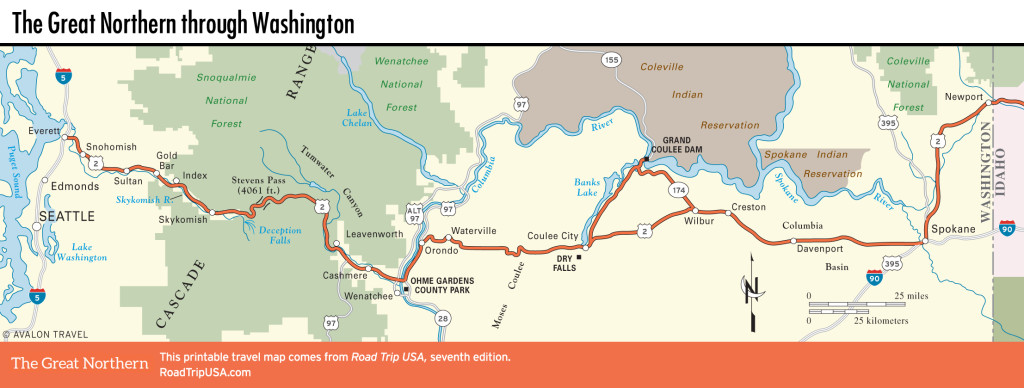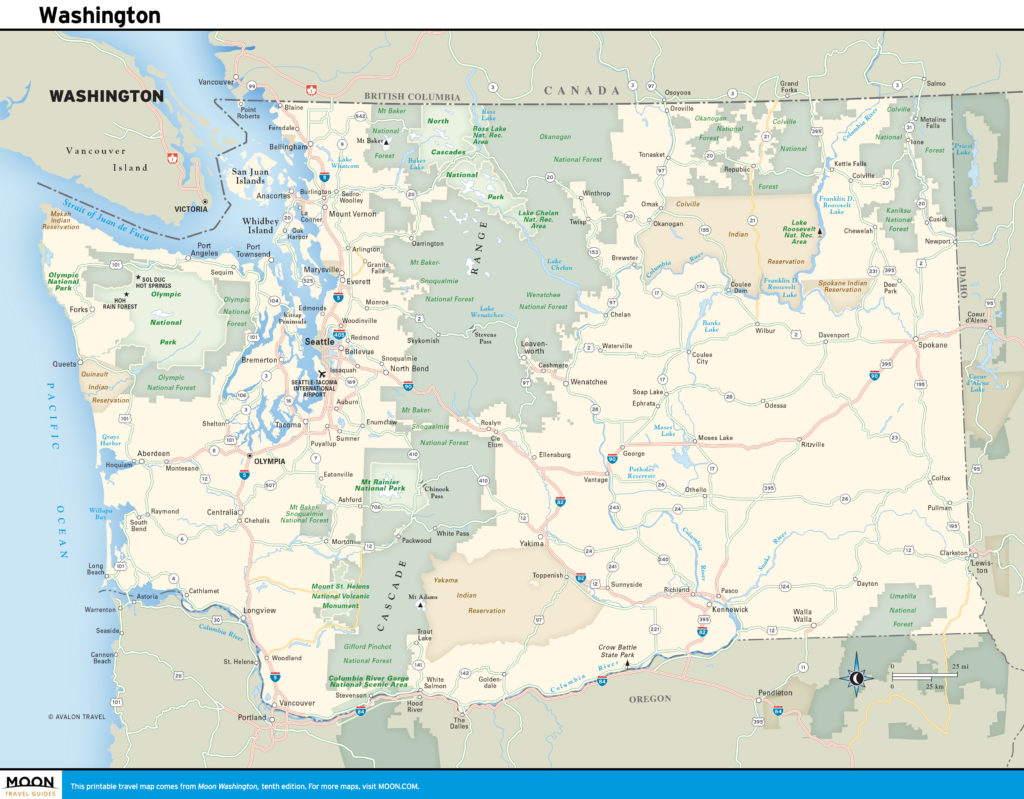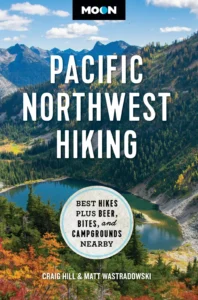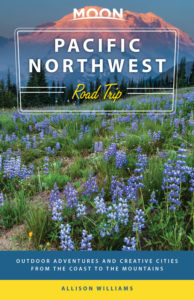Waterville to Grand Coulee Dam
Waterville
Standing at the center of fertile wheat fields 10 mi (16.1 km) east of the Columbia River, the compact farming town of Waterville (pop. 1,213) was laid out in 1885 around the stately whitewashed brick Douglas County Courthouse, which still stands at Birch and Rainier Streets. Most of downtown Waterville has been declared a national historic district, and the four franchise-free blocks of attractive brick buildings still house banks, cafés, and grocery stores—making it a nice place to stop on a journey across the state. There’s a photogenic sign-painted barn at the west end of town, and midway along US-2’s zigzag through town, the Douglas County Museum and Historical Society (124 W. Walnut St., 509/745-8435, Tues.-Sun. late May-early Oct., donation) has an intriguing display of objects tracing regional history, including Native American artifacts and a perfectly preserved pioneer post office.
Across US-2 from the museum, the attractive Waterville Historic Hotel (102 East Park St., 509/745-8695, $49-189) has been nicely restored and offers unexpectedly characterful and comfortable accommodations; it’s like stepping back a century or so, to a time when Teddy Roosevelt was president. For a bite to eat, head a block north from the museum to the welcoming Coyote Pass Café (104 W. Locust St., 509/888-4189), on US-2.
Moses Coulee
One of the last vestiges of eastern Washington’s natural, unirrigated landscape, protected in its untrammeled splendor by the nonprofit Nature Conservancy, Moses Coulee is an 800-ft-deep (243-m) gorge bounded by vertical walls of ruddy brown volcanic basalt, brightened by splashes of green and orange lichen. From the rolling plains above, US-2 cuts down into the coulee, then back up the other side, passing through some of the Columbia River Basin’s sole surviving sagebrush and giving a strong sense of how profoundly irrigation has changed the region.
Coulee City and Dry Falls
A shipping center for the wheat farms of eastern Washington, Coulee City (pop. 572) calls itself the “Friendliest Town in the West.” Despite this claim, there’s no more reason to stop now than there was during the pioneer days of the 1860s, when it was said that transfer times on stagecoaches and trains were arranged so that travelers were forced to spend the night in Coulee City, like it or not. If you find yourself here, you can choose from a pair of motels and three gas stations.
Northwest of Coulee City, the large Dry Falls Dam impounds Columbia River water to form Banks Lake; Hwy-155 runs along its sluggish shores on the way to the Grand Coulee Dam. Though you can see the coulee’s towering basalt walls from this road, to get a sense of what the Grand Coulee looked like before the dams were built, follow Hwy-17 4 mi (6.4 km) south from Coulee City to where the Dry Falls escarpment stands out as the most impressive reminder of the region’s tumultuous geology. Interpretive exhibits along the highway explain that during the last ice age, when the Columbia River flowed over the falls, this was the most powerful waterfall on the planet: twice as high as Niagara, and over 3 mi (4.8 km) across.
Grand Coulee Dam
The centerpiece of the massive project of dams and canals that have “reclaimed” the Columbia Basin, the Grand Coulee Dam is one of the civil engineering wonders of the world. Built from 1933 to 1941 under the auspices of FDR’s New Deal, at a cost of many millions of dollars and 77 lives, the dam is one of the largest concrete structures in the world: 550 ft high, 500 ft thick at its base, and nearly a mile (1.6 km) across. The combined generating capacity is more than 6,809 megawatts—half of which comes from the Third Power Plant, added in 1975. Exhibits on the construction and impact of the dam fill the large modern Visitor Arrival Center (509/633-9265, daily, free) just downstream. On summer evenings a free half-hour laser light show is projected onto the spillway of the dam.
There are three small towns—Coulee Dam, Grand Coulee, and Electric City, respectively, east to west from the dam—all of which serve the needs of boaters, anglers, and other visitors. The best place to see the Grand Coulee Dam light show is the pleasant Columbia River Inn (509/633-2100 or 800/633-6421, $108 and up), across from the visitors center.
Related Travel Maps

















